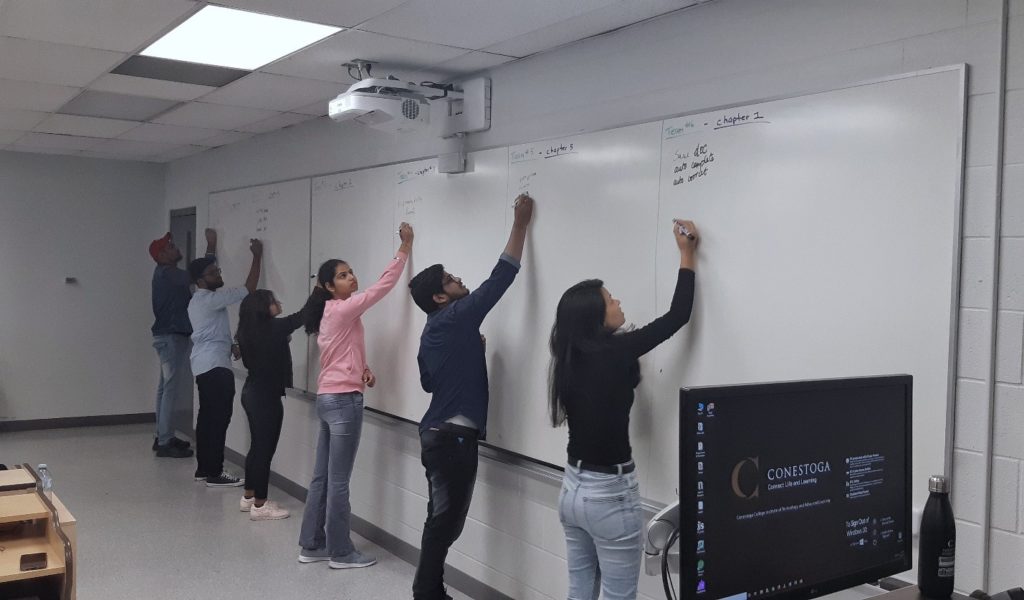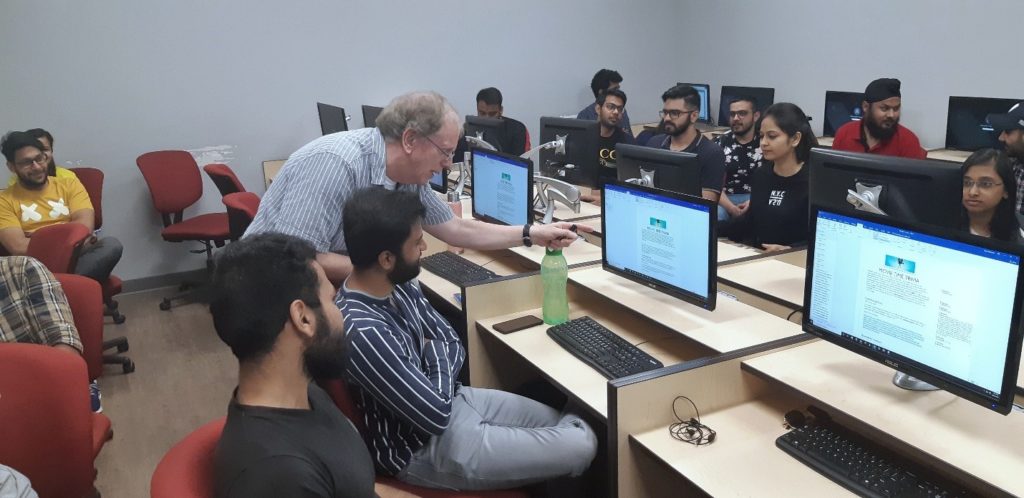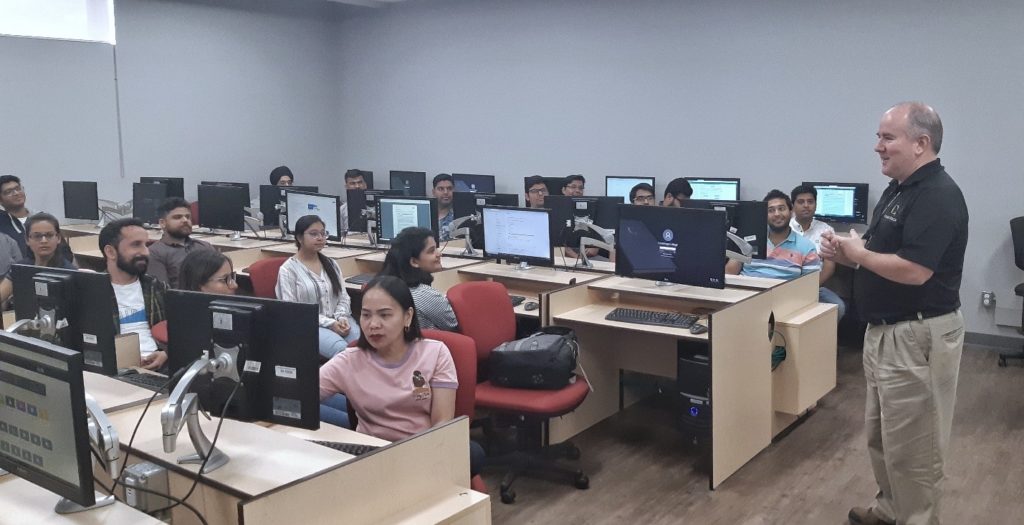
How the FAST Program Supports International Students
A professor is often the first person international students meet when they arrive in Canada. To support them in the next step of their professional careers, programs need to create a classroom community that is professional and comfortable, get to know students by showing interest in their backgrounds, and integrate their experiences in other countries into their Conestoga experience.
These are some pieces of advice shared by Conestoga faculty Andrew Sullivan, Derek Donnan and Phil Roth, who teach in Information Technology Business Analysis – Operations, an Ontario Graduate Certificate program. Each of these faculty teaches a course in “Software Integration,” in which students learn to provide information technology solutions and assessments, collect and interpret data to identify technological trends in the workplace, and perform gap and cost benefit analyses, as well as business test cases.
Their delivery is a FAST program, a fairly new learning concept, having been run at the college for around eight or nine semesters. FAST programs compress course content into more intensive weeks, granting students the opportunity to graduate more quickly. This has been a popular option for international students, and the program is now offered both at the Doon and Guelph Campuses.
“With a visa, international students can work and attend school at the same time, so they’re building practical skills while taking their classes, making them job ready when they graduate,” said Derek Donnan. “They’re essentially learning while they work, and will know what to do immediately when they’re hired full-time.”

“I use Conestoga’s official slogan: ‘What you do here, counts out there,’ when teaching international student cohorts. I want to see them succeed, so I create a stress-free environment that also functions as a community of people. At the same time, it’s a place to work where deadlines and academic integrity are important. Remind everyone they are in a work preparation environment, and allow opportunities for interactivity and application of knowledge, as well as collaboration.”
Andrew Sullivan
Phil Roth acknowledges the differences in expectations between Canada and other countries, especially in how education is delivered. In some areas, sharing and collaborating on individual assignments is acceptable, but in Canada, the work put into assignments is different.
“Teach the importance of honesty and integrity in class work, because this will translate well into workplaces. Sometimes, I’ll ask representatives from Academic Integrity to deliver a presentation so students can learn about it more in-depth,” said Phil. “Be upfront before major coursework gets going. Bring together a team of departments, including the International Office, to build credibility and show students you’re there for them.”

Each semester, their program invites a team of people from the International Office, Teaching and Learning, Academic Integrity and Student Services, asking each department to deliver mini presentations on the importance of integrity in assignments, services available to international students, cultural differences in education, and opportunities to get involved or get help outside of class.
At the beginning of the semester in international student cohorts, Andrew Sullivan asks students to share as much as they are willing about their previous experiences, so he can analyze how this may affect their studies. He has them use Microsoft Word so he can pre-assess their use of this common tool used in many work environments.
Andrew provides as many opportunities for interactivity and collaboration as possible in in-class activities, as this allows students to co-construct knowledge and use higher order thinking skills. In his section of “Software Integration,” students are divided into groups, with one acting as a captain, who stands in front of a whiteboard. Using key terminology for that class as a theme, he has groups call out associated terms they already know, as their captain writes them on the whiteboard. This allows Andrew to pre-assess their knowledge and get them energized.

Andrew Sullivan’s “Software Integration” students engage in an interactive pre-assessment, a concept Andrew believes to be important. In this exercise, students activate prior knowledge related to Microsoft Office tools, and learn teamwork and collaboration skills, essential for employability.
Phil Roth recommends as much one-on-one student support as possible. What would be covered over several weeks in a traditional program is covered within days in a FAST program. If a student misses a class, Phil suggests it is important to touch base with them individually to help them catch up.
All three teachers expressed great satisfaction about supporting international students on their learning journey, and have heard back from former students about their successes in the Canadian workplace. They express that the Information Technology Business Analysis – Operations program is well designed, and includes skills that are necessary for work as an analyst in this field. They view Conestoga as a positive memory they will never forget, expressing how much they look forward to their next step in finding employment in the field.






